Theatrical and flamboyant, often hidden behind a veil of subtle eroticism. This is how we could briefly describe the famous Rococo paintings produced by Rococo artists during the final decades of the Ancien Régime in France.
The pleasure-loving court of Louis XV adored this style and one of his most famous mistresses, Madame de Pompadour, led the way. Style Rocaille, as it was originally called, is also referred to as the “Late Baroque” and quickly spread to other parts of Europe.
Let’s take a closer look at some of the most famous paintings produced during the Rococo era in the 18th century so you can learn all about the final expression of the Baroque period.
1. The Swing – Jean-Honoré Fragonard
- Date created: 1767
- Dimensions: 81 × 64.2 centimeters (31.8 × 25.2 inches)
- Location: Wallace Collection, London, United Kingdom
The Swing is a painting that completely embodies the spirit of the Rococo era. We can see a young girl on a swing who appears to be kicking up her leg, and a young man who is peaking inside her dress. The swing is pushed by an older man in an idyllic landscape.
It’s not only one of the most intriguing paintings by Jean-Honoré Fragonard (1732-1806) but also one of the ultimate Rococo masterpieces. It was probably commissioned from the French artist by a young man for his mistress and its alternative name is “The Happy Accidents of the Swing.”

2. The Triumph of Venus – François Boucher
- Date created: 1740
- Dimensions: 130 × 162 centimeters (51 × 64 inches)
- Location: Nationalmuseum, Stockholm, Sweden
The Triumph of Venus is one of the ultimate masterpieces by François Boucher, one of the leading artists of the Rococo era. Boucher was once the master of Fragonard, something emphasized by the fact that it inspired a Fragonard painting called “The Birth of Venus” (1753-1755).
The painting was originally acquired by Carl Gustaf Tessin (1695-1770), a Swedish Count who often traveled to France and who was a great fan of French culture. He was eventually forced to sell it to the King of Sweden due to financial difficulties and this is how it ended up in the National Museum of Sweden.
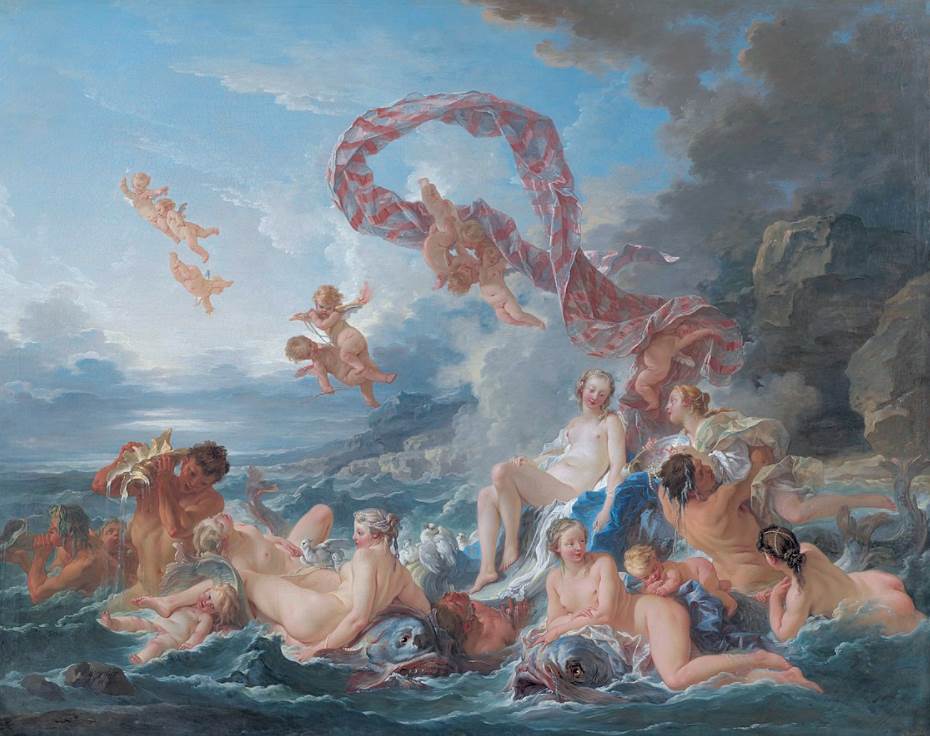
3. The Blue Boy – Thomas Gainsborough
- Date created: 1770
- Dimensions: 177.8 × 112.1 centimeters (70 × 44.1 inches)
- Location: Henry E. Huntington Art Gallery, San Marino, California, United States
The Blue Boy is one of the most famous paintings by the renowned English artist of the Rococo era Thomas Gainsborough (1727-1788). The identity of the boy has been up for debate but is believed to be the artist’s nephew named Gainsborough Dupont (1754-1797).
The painting serves as a portrait but also as the study of historical costumes. This means that the boy isn’t wearing contemporary clothes of the late 18th century but clothes worn by young men a century earlier. In that sense, it’s sometimes seen as an homage to famous Flemish painter Anthony van Dyck (1599-1641) who often portrayed youth wearing this.
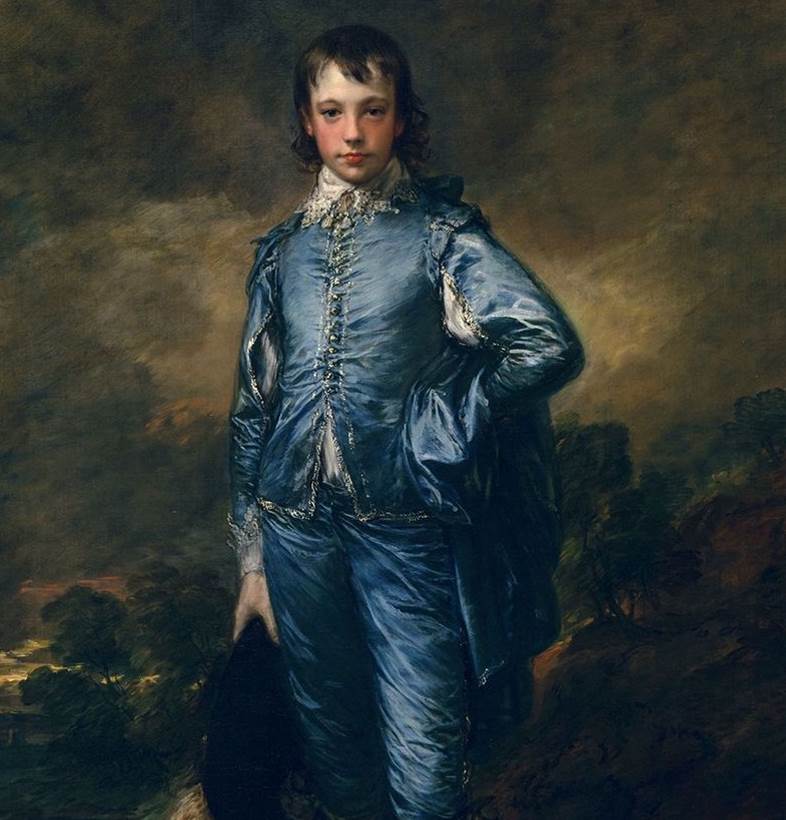
4. The Embarkation for Cythera – Jean-Antoine Watteau
- Date created: 1717
- Dimensions: 129 x 194 centimeters (50.78 x 76.37 inches)
- Location: Louvre Museum, Paris, France
The Embarkation for Cythera is also sometimes referred to as “Voyage to Cythera” or “Pilgrimage to the Isle of Cythera” and depicts a so-called “Fête Galante.” Depicting this type of party was one of the main contributions of Jean-Antoine Watteau to the Rococo era.
The artist submitted this painting to the Royal Academy in 1717 and that’s when this prestigious art institution in Paris started classifying these types of paintings as such. We can see several lovers from the aristocracy with Cupids flying around in an idyllic landscape.

5. Marie Antoinette with a Rose – Élisabeth Vigée Le Brun
- Date created: 1783
- Dimensions: 116.8 × 88.9 centimeters (46 in × 35 inches)
- Location: Palace of Versailles, Versailles, France
Marie Antoinette with a Rose is a famous painting by the French Queen’s court painter Élisabeth Vigée Le Brun (1755-1842). It depicts Marie Antoinette about a year before she would meet her gruesome end at a guillotine during the French Revolution.
It’s a special painting in the oeuvre of Madame Le Brun because it was commissioned the year that she was accepted at the Académie Royale de Peinture et de Sculpture. She managed to escape a similar fate as her patroness by fleeing France and eventually left 660 portraits and 200 landscapes in the Rococo and Neoclassical styles.
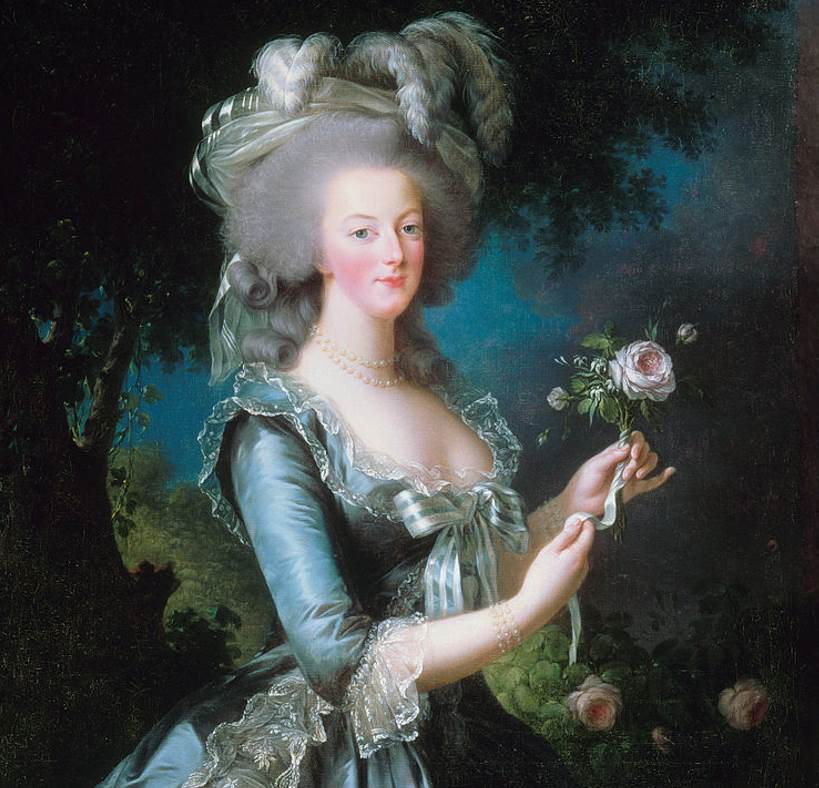
6. The Bolt – Jean-Honoré Fragonard
- Date created: 1777
- Dimensions: 73 × 93 centimeters (29 × 37 inches)
- Location: Louvre Museum, Paris, France
The Bolt is a painting also known as “The Lock” and is another famous work in the oeuvre of Jean-Honoré Fragonard. It depicts a young couple as they are seeking privacy in what appears to be a room inside the Palace of Versailles during the reign of King Louis XV.
This painting represents the libertine spirit of the pleasure-loving court of King Louis XV during the 18th century and can therefore be described as one of the most representative Rococo paintings in history.

7. Venus Consoling Love – François Boucher
- Date created: 1751
- Dimensions: 107 × 84.8 centimeters (42 × 33.4 inches)
- Location: National Gallery of Art, Washington D.C., United States
Venus Consoling Love is a painting by François Boucher, the court painter of Louis XV, and it depicts the goddess of love Venus as she is about to take away the arrows of her son Cupid. These are the ones he uses to make people fall in love.
The painting both emphasizes the beauty ideals of the 18th century as it was commissioned by Madame de Pompadour, the mistress of the king at the time. She played a major role in the Rococo art movement and helped to develop the remarkably theatrical style.
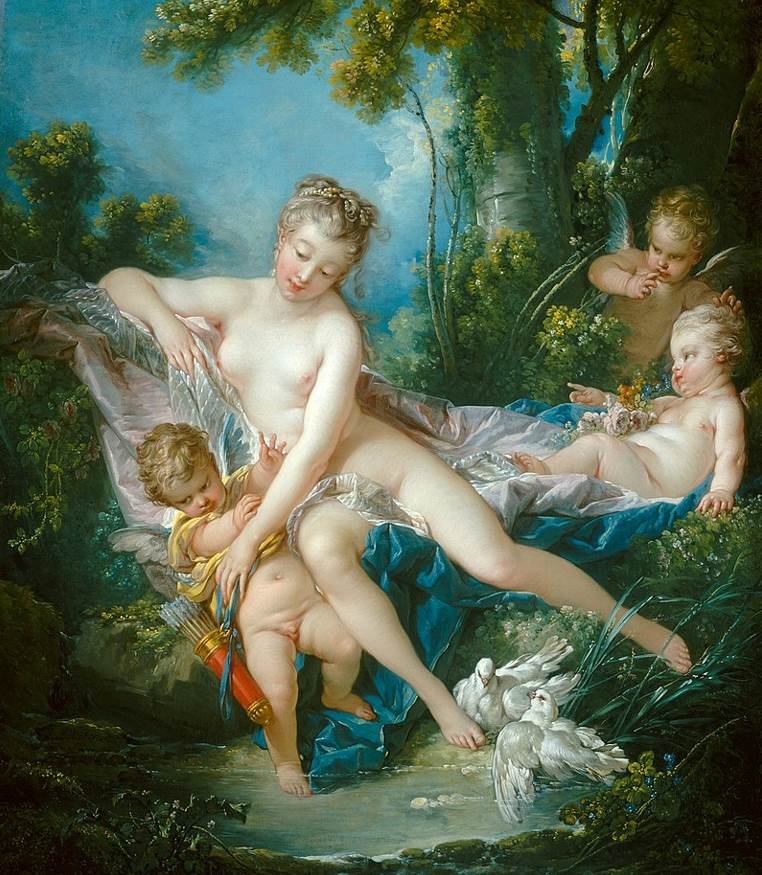
8. The Honourable Mrs Graham – Thomas Gainsborough
- Date created: 1777
- Dimensions: 237 × 154 centimeters (93 × 61 inches)
- Location: Scottish National Gallery, Edinburgh, Scotland
The Honourable Mrs Graham is also referred to as the “Portrait of Mrs. Graham” and is another remarkable work of art by English artist Thomas Gainsborough. The painting depicts Mary Cathcart, a young lady who was born in 1757 and married Thomas Graham at the age of 16.
The painting has an extremely sad backstory because Mary fell ill in the early 1790s and never recovered. She eventually died in 1792 at the age of 35 and although her husband lived another 50 years, he never remarried. He was so struck with grief that never looked at his wife’s portrait again.

9. The Stolen Kiss – Jean-Honoré Fragonard
- Date created: The late 1780s
- Dimensions: 45 × 55 centimeters (18 × 22 inches)
- Location: Hermitage Museum, Saint Petersburg, Russia
The Stolen Kiss by Fragonard might as well be the prelude to one of the artist’s other paintings called “The Lock.” Here we can see a young couple briefly exchanging a kiss in a small room. Just outside we can see a crowded room, adding to the mystery of the secret romance.
Fragonard appeared to have been influenced by Dutch Golden Age paintings that were produced a century earlier. It still embodies the atmosphere at the French court in the 18th century, a time that mistresses and secret affairs were pretty common.
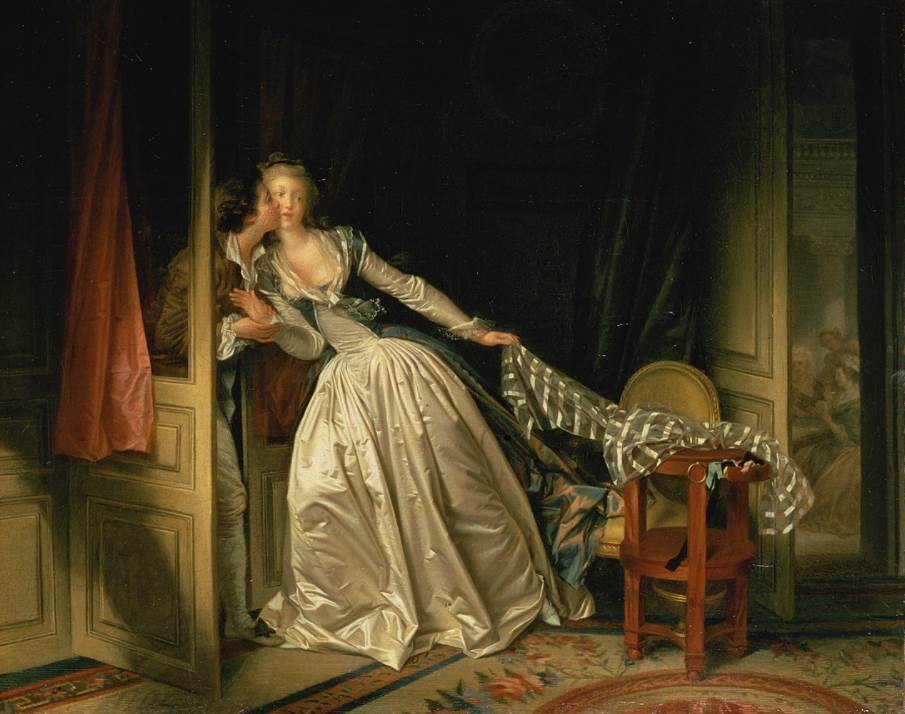
10. Madame de Pompadour as Diana the Huntress – Jean-Marc Natier
- Date created: 1746
- Dimensions: 102 x 82 centimeters (40.1 x 32.2 inches)
- Location: Palace of Versailles, Versailles, France
Madame de Pompadour as Diana the Huntress is a portrait by French court painter Jean-Marc Natier (1685-1766) of Madame de Pompadour. It was commissioned in 1745, the moment that Jeanne Antoinette Poisson (1721-1764), Madame de Pompadour’s real name, became the Marquise de Pompadour.
She was not only a major patroness of Rococo art but also a pioneer in using artworks as propaganda tools. In this painting, she is presented as Diana, the ancient Roman goddess of the hunt. This allowed her to become a major force at the French court during her stay there.

